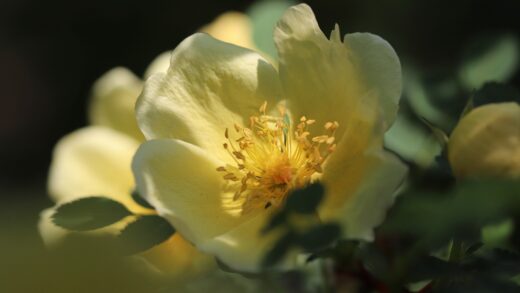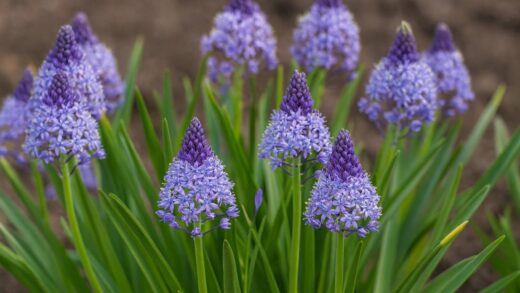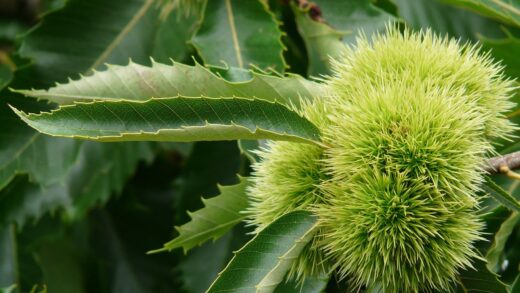Phalaenopsis orchids, more commonly known as moth orchids, are among the most popular and widespread houseplants for flower enthusiasts, thanks to their long-lasting, spectacular blooms and relatively simple care. However, for these tropical beauties to perform at their best year after year, mastering the proper planting technique and propagation knowledge is essential. Many make the mistake of planting them in general-purpose potting soil, which almost certainly leads to the plant’s demise, as their epiphytic, or tree-dwelling, lifestyle means their roots require constant air circulation. Proper repotting is not just a technical task but a renewal of the plant’s living space, which it repays with care and is essential for maintaining its long-term health.
One of the most critical aspects of caring for moth orchids is selecting the right potting medium, which must be radically different from the soil used for traditional houseplants. The most commonly used and proven base material is pine bark, available in various fraction sizes, which provides excellent aeration for the roots while being able to retain necessary moisture. This base is often enriched with other components, such as sphagnum moss to improve moisture retention, perlite for even better aeration, or charcoal pieces to help filter impurities and prevent the medium from becoming too acidic. For beginner orchid growers, commercially available, pre-mixed orchid soils are also an excellent choice.
In addition to the potting medium, the type and size of the pot also play a crucial role in successful cultivation. For Phalaenopsis orchids, transparent plastic pots are the most ideal, as they allow for continuous monitoring of the root system’s condition and the medium’s moisture content, thus avoiding the danger of overwatering. It is vital that the pot has ample drainage holes at the bottom; in fact, special orchid pots with side slits guarantee even more effective air exchange for the roots. When choosing the pot size, the golden rule is that it is better to be slightly snug than too spacious, as moth orchids like their roots to densely weave through the available space.
An incorrectly chosen pot size is one of the most common mistakes that can lead to the plant’s suffering or even death. In a pot that is too large, the potting medium stays wet for too long, causing the roots to become airless and subsequently rot, which is the number one enemy of moth orchids. As a general guideline, when repotting, always choose a pot that is only one to two centimeters larger in diameter than the one the plant was previously in. This size should provide enough space for the root system’s growth over the next one to two years without the medium drying out too slowly. A healthy, slightly crowded root system is much better at stimulating the plant to bloom.
The repotting process step-by-step
The timing of repotting is crucial to minimize the plant’s stress and ensure rapid recovery. The most suitable time for this is the period after flowering, when the plant enters an active vegetative growth phase, indicated by the appearance of new leaves or roots. Repotting is necessary when the potting medium has visibly decomposed, becoming powdery and compacted, when the roots have completely outgrown the pot, or generally every one and a half to two years. Never repot the plant during active flowering, as this can lead to premature wilting of the flowers and an anther drop.
More articles on this topic
Before starting to repot, careful preparation is essential to have all the necessary tools at hand. Prepare a new pot of the appropriate size, fresh potting medium, sharp and sterilized pruning shears or a knife, and a clean workspace. It is a good idea to soak the pine bark-based medium in water overnight to allow it to absorb moisture, which helps hydrate the plant in the initial period. It is also advisable to water the orchid thoroughly the day before repotting, as moist roots are more flexible, less brittle, and easier to remove from the old pot.
Removing the plant from its old pot requires gentle movements; carefully squeeze the sides of the pot, then gently pull the plant out along with the root ball. The most important task then is to completely remove all a old potting medium from among the roots, which can be done by hand or under running lukewarm water. Thoroughly inspect the cleaned root system: healthy roots are firm, fleshy, and whitish-gray or greenish in color, while dead parts are brown, soft, mushy, or papery and hollow. A thorough cleaning is essential to prevent future problems.
After the inspection, use the sterilized cutting tool to decisively remove all dead, diseased, or damaged root parts, cutting back to healthy tissue. Place a thin layer of potting medium at the bottom of the new pot, then position the plant in the center and carefully arrange the roots in the pot. Begin to fill the pot with the fresh medium, occasionally tapping the side of the pot gently to help the bark pieces settle among the roots, but never compact it forcefully. Ensure that the base of the plant, where the leaves emerge, is not buried below the surface of the medium, as this can lead to rot.
Vegetative propagation methods for the Moth Orchid
For the home gardener, propagating moth orchids is most feasible through vegetative means, as propagation from seed is an extremely complex process requiring sterile laboratory conditions. The essence of vegetative propagation is to grow a new, independent individual from a part of the plant, such as a plantlet, which will be genetically identical to the mother plant. For Phalaenopsis, the two most common methods are separating plantlets, or keikis, that grow on the flower spike, and less commonly, dividing the main stem of older, leggy plants. This method guarantees the preservation of the variety and flower color.
More articles on this topic
The most common and reliable form of propagation is growing a “keiki,” which means “baby” in Hawaiian. These miniature orchids develop from one of the dormant buds, or nodes, on a spent flower spike, sometimes spontaneously, while other times their appearance can be stimulated with special hormone-containing (cytokinin) pastes. One must patiently wait for the keiki to become sufficiently developed before separating it: it must have at least two to three healthy roots, each 3-5 centimeters long, and a minimum of two developed leaves. Premature separation can cause the young plantlet to perish because it is not yet capable of independent nutrient uptake.
When the keiki has reached the appropriate level of development, use a sterile scalpel or sharp knife to carefully separate it from the flower spike, preferably with a small, one-centimeter piece of the spike attached to help with anchoring. Pot the small plant in a tiny, transparent pot filled with a fine-grade orchid medium, which retains moisture better. It is critical to provide high humidity for the newly potted keiki, so it is advisable to place it in a mini-greenhouse or cover it loosely with a transparent plastic bag, while also ensuring regular ventilation to prevent mold.
Another, less common phenomenon is the appearance of a basal keiki, which develops directly at the base of the mother plant. These plantlets are generally best left on the mother plant for a longer period, as they develop much faster and more vigorously thanks to the shared root system. For older, leggy moth orchids with a bare stem, one can also attempt to divide the stem: the top part of the plant, with several leaves and some aerial roots, is cut off and potted, while the lower section with its root system will hopefully produce new shoots. However, this is a riskier procedure that requires advanced technique.
Aftercare for newly planted and propagated orchids
The few weeks following repotting or propagation are a critical period in the plant’s life, as the intervention causes stress, and it needs time to recover. The primary goal during this period is to encourage new root growth and minimize shock, so the plant should be placed in a calm, protected location. Avoid direct sunlight, drafts, and sudden temperature fluctuations; a consistently warm, bright but not sunny, and humid environment is most ideal for it. Patience is our most important virtue during this phase.
Our watering and fertilizing habits also need to be adjusted. Do not water a newly repotted orchid immediately, especially if many roots had to be removed, but wait about a week. This allows enough time for the cut wounds to dry and heal, preventing fungal and bacterial infections and root rot. The first watering should be thorough, using the soaking method. Fertilizing should be completely suspended for at least a month, or even longer, as the fertilizer salts can burn the sensitive, new root initials.
Maintaining high humidity is crucial for aiding recovery, especially for tiny, separated keikis, which can easily dry out. Humidity can be increased by grouping plants together, using a tray filled with water and pebbles placed under the pot, or by using a room humidifier. Additionally, we must ensure the stability of the newly potted plant; secure it with a stake or clip so that it cannot move in the pot, as wobbling can break off the tender, new root tips that are trying to anchor themselves in the new medium.
The fruit of successful aftercare lies in patience; do not expect immediate, spectacular growth. Monitor the plant, and the appearance of new leaf or root growth will signal that the intervention was successful and the plant has begun to re-establish itself. Once the orchid starts to grow actively again, we can gradually return to the normal care routine, including regular watering and balanced fertilization. A professionally repotted moth orchid will reward the care with renewed vigor and abundant blooms in the years to come.


















